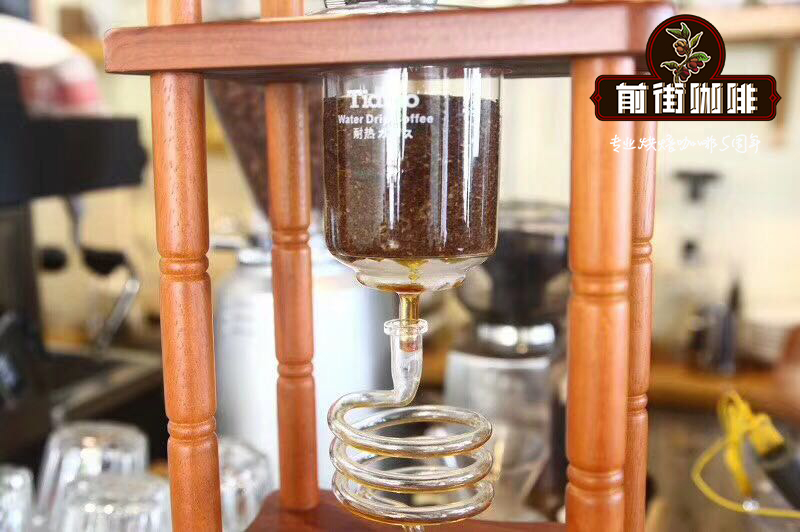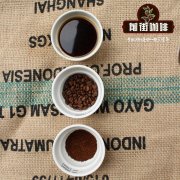Ethiopian gardenia G1 comes from Africa with sweet taste and rich floral flavor of coffee.

Professional coffee knowledge exchange more coffee bean information please follow the coffee workshop (Wechat official account cafe_style)
Although Ethiopia is an underdeveloped country located in northeast Africa, it is a world-famous coffee producer.
Ethiopia has the most diverse coffee ecosystem in the world (forest coffee, semi-forest coffee, pastoral coffee and plantation coffee), which enables the preservation of its rich Arabica genes, coupled with multiple treatments of sun, water and semi-washing, showing a complex and varied flavor. It can be said that most of the "taste spectrum" of coffee producing areas around the world can be drunk here, reflecting Ethiopia's inclusive "king flavor". In addition, Ethiopia is the cradle of Arabica coffee beans, and growing, stir-frying and brewing coffee are unique local cultural heritage.
The word "native species" refers to the ancient varieties of plants that were originally planted to be eaten, while some people define a variety that takes more than 100 years to be called a native species, while others say 50 years. Then some people define varieties that existed before 1945 as native species, about the time when hybrids began to emerge, or 1951, when hybrids became more widespread.
In the coffee industry, you will find that the term native species applies to varieties introduced to South America and Asia more than 100 years ago, as well as to many coffee varieties in Africa, especially coffee from Ethiopia.
The emergence of the word native species occurred after the start of the boutique coffee movement. At that time, buyers of boutique coffee, which could not tell the difference between Tibica and bourbon, would collectively refer to all these unknown varieties as native species.
Water-washed native species in 2019 season
Name: gardenia G1
Producing area / Manor: Guji/Banko Michicha
Variety / treatment: Heirloom native species / washing
Flavor description: gardenia, cream, jasmine tea, brown sugar, silky and soft taste.
Important Notice :
前街咖啡 FrontStreet Coffee has moved to new addredd:
FrontStreet Coffee Address: 315,Donghua East Road,GuangZhou
Tel:020 38364473
- Prev

Coffee producing area of Cochelle, Ethiopia introduces the flavor characteristics of coffee beans treated by red jadeite CM in the sun.
Professional coffee knowledge exchange more information about coffee beans Please follow the coffee workshop (Wechat official account cafe_style) CM, which stands for CarbonicMaceration (carbon dioxide impregnation), is a processing method for red wine production. Before the grapes are crushed, the whole grape is crushed.
- Next

Good coffee from heaven-St. Helena Coffee. Why is St. Helena Coffee expensive
Professional coffee knowledge exchange more coffee bean information please follow the coffee workshop (Wechat official account cafe_style) "St. Helena Island" also known as "Napoleon Island" ~ St. Helena Coffee is one of the ten most expensive coffee. St. Helena Island is located 1900 kilometers away from the west bank of Africa. The island was discovered by Portuguese navigators in May 1502 and occupied by the Netherlands from 1645 to 1651
Related
- Detailed explanation of Jadeite planting Land in Panamanian Jadeite Manor introduction to the grading system of Jadeite competitive bidding, Red bid, Green bid and Rose Summer
- Story of Coffee planting in Brenka region of Costa Rica Stonehenge Manor anaerobic heavy honey treatment of flavor mouth
- What's on the barrel of Blue Mountain Coffee beans?
- Can American coffee also pull flowers? How to use hot American style to pull out a good-looking pattern?
- Can you make a cold extract with coffee beans? What is the right proportion for cold-extracted coffee formula?
- Indonesian PWN Gold Mandrine Coffee Origin Features Flavor How to Chong? Mandolin coffee is American.
- A brief introduction to the flavor characteristics of Brazilian yellow bourbon coffee beans
- What is the effect of different water quality on the flavor of cold-extracted coffee? What kind of water is best for brewing coffee?
- Why do you think of Rose Summer whenever you mention Panamanian coffee?
- Introduction to the characteristics of authentic blue mountain coffee bean producing areas? What is the CIB Coffee Authority in Jamaica?

